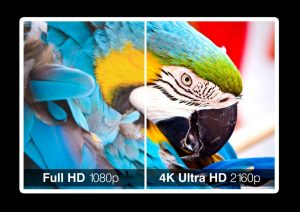For those who know the specifications of current cables, let’s start with speed. 4k HDMI cable 2.0 dates back to 2013, and it is capable of transmitting 4K content at 60 fps (frames per second) – this means video at a resolution of 3840 x 2160, updated 60 times per second.
This high frame rate is usually used in 4K video games, as they have to follow a multitude of different objects, such as bullets or swift enemies. Most movies are made at 24 fps, and TV shows at 25 fps or 30 fps.

Several years later, a small update, HDMI 2.0a, made the connection between TVs and players, transmitting HDR (High Dynamic Range) information as well. HDMI 2.0b appeared immediately after, supporting HLG (Hybrid Log Gamma) information. So far, this has been the highest standard for most consumers.
But the future of television looks even better than that. What is HDMI 2.1 doing? Essentially, the standard HDMI 2.1 cables can easily exceed the 4K limit, sending content at maximum 10K and 120 fps. All those extra pixels, 6 times more than a standard 4K, require a larger bandwidth to send the information. HDMI 2.1 completes this task, the upper limit being 48 Gigabits per second, instead of 18 Gbps.





